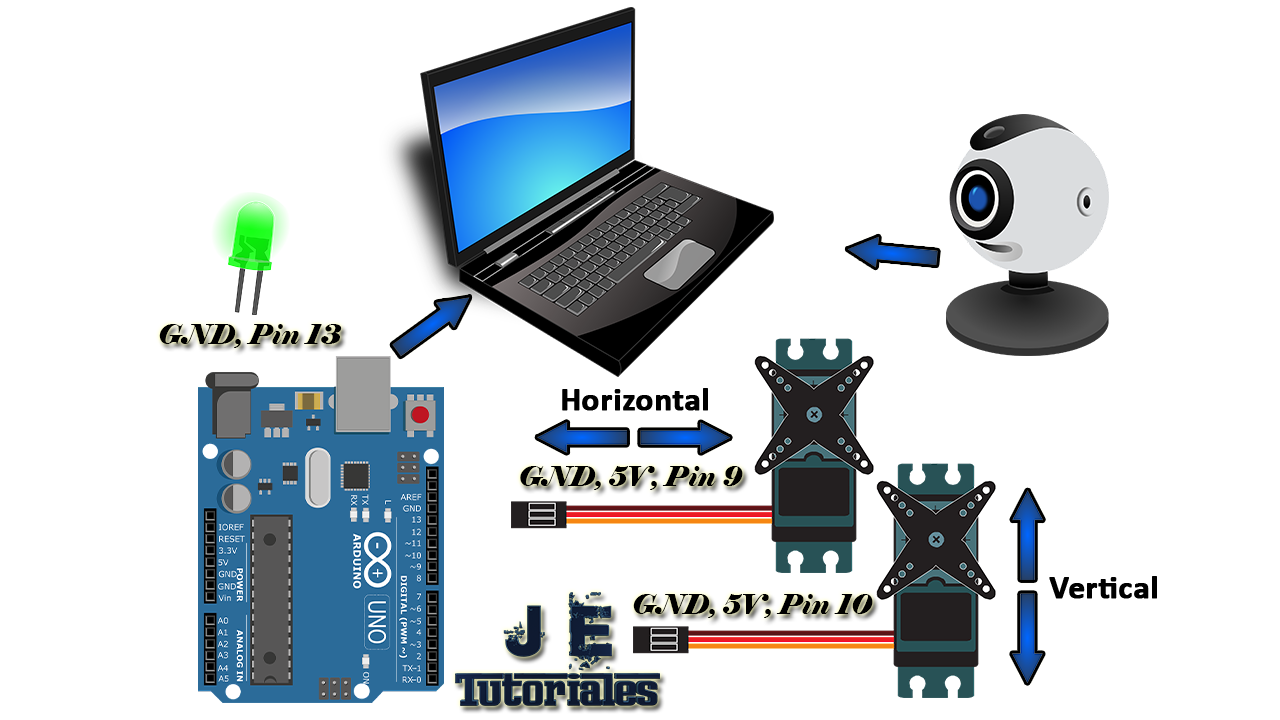Camara Arduino Programa
//By Mudaser Ahmed Awan
//Testing of Digital Potentiometer with Arduino Uno
//X9C104, X9C103, X9C102
//Date: 11 May 2017
#define CS 2
#define UD 3
#define INC 4
The two I2C connections are made to two of the Arduino analog inputs. Analog pin A4 is the SDA connection. Analog pin A5 is the SCL connection. Some Arduino clones also have separate SDA and SCL pins, usually located on the same side as the digital I/O pins above the AREF pin. You can use these connections instead of the analog pins if you wish. Camara Arduino Programa. 9/10/2019 How to Use OV7670 Camera Module With Arduino?: Here we introduced one OV7670 camera module just purchased online, including the communication of camera module and Arduino UNO, the using ways to take photo via camera module, and so on. This is an Arduino camera module, adopted the Surveillan. The following two snippets implement the Arduino Blink Example in both C and Assembly. The output pin is the Arduino pin D13, which is the fifth pin in the PORTB register. The delay between on and off is 1000ms. The well-known Arduino Blink sketch implementation in plain C. Note that functions like digitalWrite or delay do not exist. ESP32 Cam code upload using Arduino Uno Introduction. In this era of IoT, we are developing many security IoT projects which requires camera module. ESP32 camera module is a cost effective ESP32 chip based wifi camera module. In this article we will see ESP32 Cam code upload using Arduino Uno. There are many ways to upload code in ESP32 cam but. In this article, I will show you how to display the stream from an OV7670 camera module onto a 1.8-inch TFT LCD screen using Arduino. OV7670 is the most affordable camera module that can be used with the Arduino, so you can use this in a lot of projects.
void setup() {
// put your setup code here, to run once:
Serial.begin(9600);
Serial.println(“X9C104 Digital POT Test”);
pinMode(CS, OUTPUT);
pinMode(UD, OUTPUT);
pinMode(INC, OUTPUT);
}
void store()
{
digitalWrite(INC,HIGH);
digitalWrite(CS,HIGH);
delay(50);
digitalWrite(CS,LOW);
}
void Up()
{
digitalWrite(CS,LOW);
digitalWrite(UD,HIGH);
digitalWrite(INC,HIGH);
delay(50);
digitalWrite(INC,LOW);
delay(50);
}



void Down()
{
digitalWrite(CS,LOW);
digitalWrite(UD,LOW);
digitalWrite(INC,HIGH);
delay(50);
digitalWrite(INC,LOW);
delay(50);
}
void loop() {
// put your main code here, to run repeatedly:
resetPot();
for(int i=0;i<10;i++)
{
Up();
store();
}
Camara Arduino Programacion
while(1);
}
void resetPot (void)
{
pinMode(INC,OUTPUT);
pinMode(CS,OUTPUT);
pinMode(UD,OUTPUT);
digitalWrite(INC,HIGH);
digitalWrite(CS,LOW);
digitalWrite(UD,LOW);
for(char i=0;i<100;i++)
{
digitalWrite(INC, HIGH); // sets the pin on
delayMicroseconds(5000); // pauses for 50 microseconds
digitalWrite(INC, LOW); // sets the pin off
delayMicroseconds(5000); // pauses for 50 microseconds
}
digitalWrite(INC,HIGH);
digitalWrite(CS,HIGH);
delay(20);
Camara Arduino Programa Gratis
}